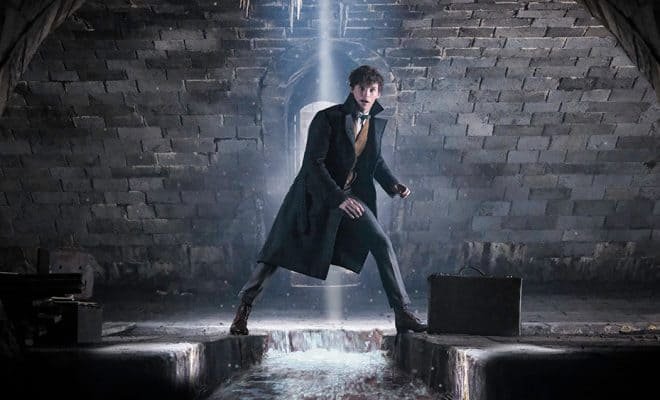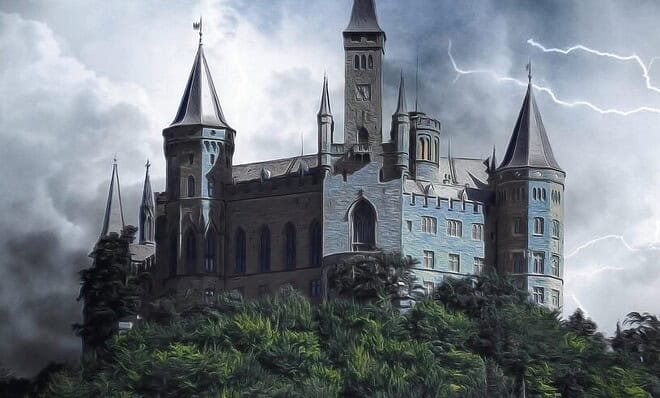A Case for ‘Crimes of Grindelwald’

The Harry Potter series is the first set of books that I remember reading when I was younger. I can remember how the first book made me feel like I was a student at Hogwarts that year, observing Harry’s adventures. I grew up with the Boy Who Lived and rooted for him when he defeated Voldemort. When the seventh book and eighth movie finally released, it was heartbreaking to think that the Wizarding World and the magic were over. It felt like coming home again when the first Fantastic Beasts movie was released because I wasn’t ready to leave the world behind.
The most magical moment of Crimes of Grindelwald was the return to Hogwarts, seeing the castle again with that beautiful orchestra music playing in the background. I was home. However, that feeling faded when I finally allowed myself to read articles about the movie and saw the reviews. There’s nothing wrong with critiquing and criticizing movies – I do it too! Still, I haven’t seen many people defending the movie yet and decided to be the first. Today, we’re going to look at the four biggest plot holes fans have identified and try to patch them up!
We’ll be viewing some important plot points, so this is your first and last spoiler alert!
- Dumbledore teaches Defense Against the Dark Arts.
Evidence: We are introduced to the young Albus Dumbledore before he takes over as headmaster. While J.K. Rowling told us that Dumbledore was the Transfiguration professor at Hogwarts, he was presented as the Defense Against the Dark Arts professor instead. There is no explanation or reference to his career as the Transfiguration professor.
Honestly, I have a hard time seeing this as a plot hole for the movie. While it is true that J.K. Rowling never mentioned Dumbledore serving as the DADA professor at Hogwarts, it is not unlikely that in his long life he didn’t teach multiple subjects. There is also a clear order from the Aurors that visit the professor that he will not teach Defense Against the Dark Arts again when he refuses to go against Grindelwald. Perhaps that is what made his transition to Transfiguration before becoming headmaster. Either way, this plot hole can be explained.
- A Professor McGonagall made a cameo appearance.
Evidence: During a flashback of Leta Lestrange’s time at Hogwarts, we are introduced to a young McGonagall. However, she was not born in the time that the film or flashback took place, which left fans wondering how our beloved Minerva McGonagall might be in the movie if her character did not exist yet.
Thisis likely the easiest plot hole to explain away. While it seems that a mistake was made in the screenplay, we do not know much about McGonagall’s family history. It is entirely plausible that her mother, or grandmother, worked at Hogwarts before she was born. It could be what inspired the woman to become a professor at the school.
- Jacob Kowalski was obliviated.
Evidence: In the first Fantastic Beasts film, we watched as Newt helped MACUSA wipe the memories of the city to avoid exposing the wizarding community. He used venom from a creature called the Swooping Evil to accomplish this task. Among the No-Majs that were obliviated, the lovable baker Jacob Kowalski was one of them. However, he appears in the sequel movie and explains that the potion only erased bad memories – he didn’t have any.
If this were the only evidence in the movies to suggest this plot hole, I’d be inclined to agree that it is an unanswered question. However, many people forget that while the No-Majs were ‘obliviated’, it was not through the Memory Charm. Their memories were erased by a potion, made from diluted Swooping Evil venom. In the first Fantastic Beasts film, Newt tells us that he expects it can be used to erase bad memories. It would make sense that a majority of the No-Majs would forget the bad experiences surrounding the events in New York, while Jacob wouldn’t. He didn’t have bad memories from the experience. He made several new friends, fell in love, and enjoyed his introduction to magic. Overall, this can’t be called a plot hole.
- Credence is a Dumbledore.
Evidence: In the film’s final moments, Grindelwald reveals to Credence Barebone that he is, in fact, Aurelius Dumbledore. Fans find this to be a confusing revelation, seeing that we were not informed about a third Dumbledore brother before this film. They were also quick to note that if Credence was born in 1901, he could not be the brother of our Dumbledore. Both Albus’ parents were dead by 1901, leaving us to wonder how this child could be a Dumbledore.
This is not an easy plot hole to dismiss. I’ll admit that I was surprised and confused by the reveal myself. However, I have come up with two solutions to this question. The first is that Grindelwald lied. This would not be an unreasonable assumption, as Grindelwald is shown to be a master manipulator and convincing liar. It is quite possible that this was an elaborate scheme to gain Credence’s power. The second option is that we have wrongly assumed that they are brothers. It could be that they are distant relatives and we are only meant to think they are brothers now.









